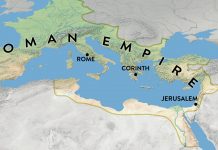“We need a Bible like this,” said Reverend Richard Cizik, Vice President of the National Association of Evangelicals in America, at the launch of the first Green Bible in 2010. Current environmental issues demand an ecological Bible, where passages about the quality of divine creation and care for nature entrusted to us by God are highlighted in green, Cizik says.
However, the issues we face today are increasingly diverse. Does this mean we need more and more specialised Bibles? And what happens when initiatives to reactivate the biblical text go beyond highlighting certain passages to suggesting that some “offensive” texts should be removed from the Bible altogether?
As political correctness has spread across society, imposing censorship and self-censorship in public discourse in the name of political and social inclusion, the idea that even the Bible should abandon “offensive” texts has started to gain traction.
Dedicated Bibles
For many in today’s secularised society, the Bible is reduced to a collection of irrelevant texts, some sexist, some racist, and some outright offensive, written by people in a time and culture that have no connection to our current experiences.
Today, 6 out of 10 Americans see “any attempt at religious conversion” as an extreme act, 83% of American adults believe evangelism is an expression of religious extremism, and the majority of ordinary Canadians consider that “religion does more harm than good in the world.” In this context, it shouldn’t be surprising to hear cases where members of a Christian university are told that “any scripture that could be considered offensive to particular individuals should not be read or studied in school. For example: any teachings that denigrate or vilify someone’s sexual orientation.”
From the same reasoning—that the original form of the Bible is unattractive to today’s sexual minorities due to passages that explicitly condemn certain sexual behaviours—a pastor of the Episcopalian Church in the USA has adapted and published a version of the Bible for homosexuals. The book, named Queen James, after the King James translation of the Bible, has removed the passages that condemn homosexuality and replaced the cross on the cover with one in rainbow colours, the symbol of sexual diversity used by the homosexual community.
More recently, a group of 20 female theology professors from various Christian denominations published The Women’s Bible, an attempt at a feminist Bible that seeks to counter traditional interpretations of texts regarding the role of women in society. While feminists generally call for the complete abolition of patriarchal religions, this group of feminists aims to show that, when read correctly, the Bible is not incompatible with today’s feminist values. “For example, in the Gospel of Luke, there’s the famous story of Martha and Maria, the two sisters,” they explain. In the passage, Martha—who “was distracted by all the preparations that had to be made”—complains that her sister, instead of helping her, is sitting and listening to Jesus. The authors of the volume argue that, although the traditional interpretation is that “preparations” refer to serving a meal, the original Greek word, diakonia, refers to religious service. “In the Greek original, Martha is not serving a meal and that she could be serving communion. That she’s not just a housewife but could be a disciple who has a responsibility to serve in the church,” they say.
While the authors are correct in saying that, when read correctly, the Bible does not endorse or promote the view of women as second-class citizens and is quite progressive compared to the standards and customs of its time, reinterpreting the text to fit a specific ideology is certainly not the proper way to highlight this fact. Similarly, neither is the removal of passages or the creation of a Bible composed only of texts that serve a particular purpose.
Taken out of context and exploited, biblical passages can become political and social weapons serving a variety of agendas. Whether this is the case with The Women’s Bible remains to be seen. It would require theological analysis to determine the appropriateness and accuracy of this new translation. However, with the precedent set by the Slave Bible—a selection from the King James Bible that omits 90% of the Old Testament and 50% of the New Testament, focusing strictly on servitude and obedience while excluding parts about liberation, justice, and divine retribution, used by many Christians in the southern United States and Britain to justify slavery—we should have learned by now that certain theological ventures have real consequences. Even today, the Trump administration used biblical reasoning to demand submission from its critics regarding its immigration policy in the United States.
Can we trust the Bible?
The Bible is unique in many ways, including the fact that it is the only book of its age still widely read today, and it remains the most read book in history. Despite this, even among those who identify as Christians, there are people who doubt the truth and historicity of its contents. While 80% of American adults profess belief in God, only 47% now believe that the Bible is inspired by God, with this number decreasing with age. Among American millennials, those aged 18 to 35, over 50% believe that the Bible is not entirely true, containing ancient myths (up from 44% in 2014 and 46% in 2016). So, how much trust can we place in the Bible? Why does the Bible look the way it does? Who decided which books should be included in it? Are the events described in it historical? And how can we trust that the original message has been preserved through so many translations over time?
From a technical standpoint, the Bible is a collection of prophetic, poetic, historical, moral, and revelatory books, deeply rooted in human existence over thousands of years.[1] According to its own claims, the Bible is the product of human work under divine inspiration, which does not mean that the authors gained supernatural powers or had a direct communication channel with God dictating what to write. The Bible is “inspired,” not “dictated.”[2] The Bible was written in three languages (Hebrew, Aramaic, and Greek) over more than a millennium-and-a-half by a large number of authors from various professions and social classes of their time. Despite this, the Bible presents a remarkable unity, as it bears the signature of God throughout.
The books that make up the Bible as we know it are called “canonical books.” The process of canonization “is really a question about the reasons why certain books came to be regarded as sacred and authoritative in the early Christian communities,”[3] says Kwabena Donkor, associate director at the Biblical Research Institute. Due to a lack of historical sources, it is not possible to provide a clear answer to who decided the canonization of the books and when. Liberal scholars of the historical-critical method suggest that the Bible gained its authority progressively, in several stages. However, from a conservative perspective, the situation is entirely different, Donkor says.[4]
The first Bible of the Christian Church was the Hebrew Old Testament, organised into three major categories: the Law, the Prophets, and the Writings. Numerous biblical passages suggest that the Law, which includes Genesis, Exodus, Leviticus, Numbers, and Deuteronomy, was considered the Word of God from its inception, and the Jewish people revered it and sought to apply it in their daily lives. According to Hebrew tradition, most of the Old Testament canon was established by the time of Ezra and Nehemiah, as indicated by the observations of the Jewish historian Josephus Flavius.[5]
However, there is no evidence that the decision regarding the contents of the Old Testament was made by a single person or group. “The story of Israel shows that throughout its history, certain individuals were recognized as prophets of God, and what these people said and wrote was considered the Word of God. These writers did not have to wait for their work to pass the test of time for their authority to be acknowledged,”[6] Donkor says. According to the prologue to the Greek translation of Ecclesiastes (a 2nd-century BC apocryphal text), all three parts of the Old Testament were recognized as canonical by the 2nd century BC. Jesus’s frequent references to the Old Testament further confirm the authority of the Hebrew canon.
For approximately 20 years after Jesus’s death and resurrection, His message was spread orally by the apostles and early Christian followers. It was only later, around the mid-1st century, that Paul began writing his series of epistles to various Christian communities that had been established. By the end of the 1st century, when John wrote Revelation, all the books of the New Testament were completed.[7] The formation of the New Testament canon occurred in stages over four centuries, eventually narrowing down to the 27 books of infallible authority that constitute the New Testament today.
Orthodoxy, Catholicism, and Protestantism all agree on the contents of the New Testament, but not on the Old Testament. In addition to the 39 universally recognized books, Catholicism includes seven more, referred to by Protestants as “apocrypha,” and Orthodoxy includes even more. Although the Catholic Church defended the inclusion of the apocrypha at the Council of Trent, and Martin Luther included them in his German Bible translation in a separate section, stating they were “not considered equal to the Holy Scriptures, but are useful and good to read,”[8] today they are not included in most Protestant Bibles due to perceived theological aberrations and historical errors noted by scholars.
In comparison, the inspired Bible, consisting of the 27 books of the New Testament and the 39 books of the Old Testament, are “self-authenticating”, i.e., the books of Scripture themselves testify to their God-inspired truth; the manuscript evidence, as well as the archaeological and prophetic evidence, confirms the reliability of Scripture. The Dead Sea Scrolls and other manuscript finds have demonstrated the textual reliability of the Bible, and the many archaeological discoveries support the historical reliability of Scripture. Though archaeology cannot prove that the Bible is true, it does confirm the historical background of the Bible. Finally, the fulfilment of Bible prophecies confirms the Bible’s claim that ‘prophecy never came by the will of man, but holy men of God spoke as they were moved by the Holy Spirit’” (2 Peter 1:21).[9]
What about discrepancies in the Bible? Pastor Nicu Butoi says, “the answer lies in the eye of the beholder.”[10] When we say the Bible is infallible, we mean that through the gift of prophecy, God revealed His truth to the world without error. This does not imply that the inspired individuals were infallible themselves, that they were incapable of making mistakes, or that they fully understood everything they wrote. It also doesn’t mean that the Gospel authors couldn’t recount Jesus’s words and actions differently based on their own experiences.
Often, the issue lies not with the biblical text but with its interpretation. “Some apparent errors in certain Bible versions may result from incorrect or misleading translations of the original text. The Bible student should compare several good translations before reaching any conclusions,”[11] says Frank Hasel, professor of systematic theology. These discrepancies are exceptions and do not undermine the Bible’s teaching or historical credibility. Compared to other ancient documents, the Bible is the most accurately transmitted and preserved text. “We can trust that the Bible available to us today is God’s truth,”[12] Hasel says.
Additionally, with patience in studying the Bible, we will find that it explains itself. Due to the Bible’s intrinsic unity, by comparing one text with another, starting from clear statements to less clear ones and considering the biblical context of passages, we will find the answers and realise that the Bible is indeed reliable.
How to interpret the Bible correctly
The Bible becomes what its interpreter makes it. The same word of God can be a truth in one person’s mouth and a falsehood in another’s. Over time, the study of the Bible’s historical and spiritual truth has only deepened, and the range of possible interpretations has expanded. Numerous volumes advocate for various cultural interpretations of the Bible, with African-American, South Korean, and feminist hermeneutics being prominent examples.
African-American hermeneutics, for instance, define Christian theology in direct relation to the history of African-Americans and emphasise that the God of the Scriptures is a Saviour [13]. In South Korean theology, the Bible is read through the lens of the “minjung” class, referring to those who are “politically oppressed, socially alienated, economically exploited, and deprived of education in cultural and intellectual matters,”[14] highlighting the radical nature of Jesus. The feminist perspective, which criticizes the “sanctification of ancient Jewish cultural practices against women,” finds an interpretive key based on the central theme of liberation, nullifying and invalidating texts that are hostile to women.[15]
These interpretations, whose primary role is to suggest ways in which the Bible can become relevant to a specific culture or social group, represent just a few examples from the broader spectrum of multicultural biblical interpretations. They stand in contrast to the traditional formulations that have long dominated Christian theology. But is any one of them correct? If so, which one? Are there others that are also correct?
Personal experience is the starting point for any practical theology, says Lael Caesar, a professor of Old Testament studies,[16] and this is how it should be. Faith that, in addition to the testimony of the Bible, ignores sound reason and life experience is, in fact, blind faith—something God does not expect from anyone, Pastor Nicu Butoi says.[17]
But how can we keep things in balance and avoid a situation where we only recognize as valid the interpretation that serves us or our group? The difference lies in the starting point. “The Bible should not be read apologetically but exegetically, meaning not to use it as ammunition for your own ideas but to discover it as it truly is—a guide to the great Teacher,”[18] Nicu Butoi says. If the starting point is personal experience rather than divine revelation, it is difficult to reach balanced and beneficial conclusions for everyone. Moreover, if we begin with a conscious or unconscious commitment to justify ourselves and act against others based on the Bible, we are defying the Word of God, Caesar says.[19] God does not make the distinctions among people that we do, influenced by the cultural sensitivities in which we were raised. He supports us all.
That being said, it is possible to explain the Gospel in a way that is both appropriate and relevant to today’s cultural diversity. This can be seen in the work of the Apostle Paul, who describes his method: “To the Jews I became like a Jew, to win the Jews. To those under the law I became like one under the law (though I myself am not under the law), so as to win those under the law. To those not having the law I became like one not having the law (though I am not free from God’s law but am under Christ’s law), so as to win those not having the law. To the weak I became weak, to win the weak. I have become all things to all people so that by all possible means I might save some” (1 Corinthians 9:20-22, NIV).
Throughout these transformations, what remained unchanged were the foundations and roots of Christianity, which Paul viewed with great clarity. “Generally, the starting point for theological contextualization is the self and the group of selves… . However, the Apostle Paul shows us that our starting point should be God, as He has revealed Himself through the Bible… . Again, the starting point for the theologians mentioned earlier is the here and now. Paul shows us that the starting point must be the beginning, where God created all things in a superlative quality. Although sin has marred His perfect creation, God is committed to restoring it,”[20] Caesar says.
No ideal we can imagine for ourselves or our group in the present can surpass the ideal God has for us in the end, for which we were created from the very beginning.[21]


















